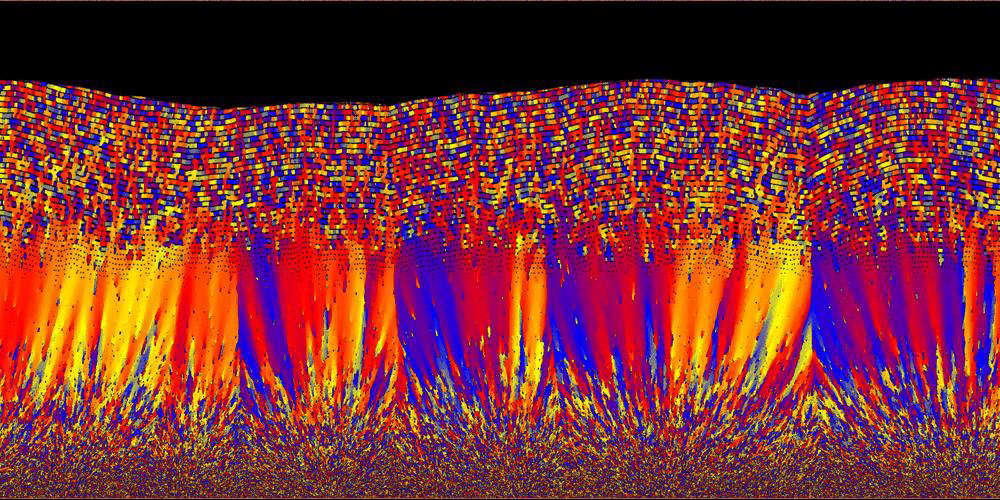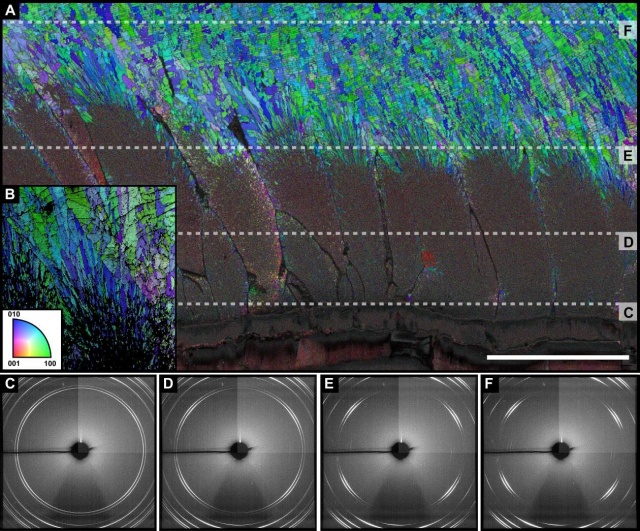
László Gránásy, Széchenyi Award winner researcher of the Wigner Research Centre for Physics, of the Hungarian Academy of Sciences, Budapest and his computational materials science team in cooperation with the German scientists (Igor Zlotnikov’s team at the Department of Molecular Bio-Engineering, at the Technical University of Dresden) investigates how far the mathematical methods developed in materials science can be applied for modelling solidification processes in biological systems. During biomineralization hierarchically structured organic-inorganic composites of unique properties form, where the unique properties originate from their microstructure. Examples for biomineralization are the formation of bones, teeth, kidney stones, and deposition of cholesterol on the walls of blood vessels, or the creation of diatom and mollusk shells, and coral-skeletons.
Computational materials science of one of the important ingredients of knowledge based materials design. Analyzing the solidification/crystallization of metals, polymers, plastics, and composites, etc. efficient modeling tools have been worked out in the past for describing complex solidification processes and the evolution of microstructure. A method of choice in this area is a specific version of the phase-field model that captures crystallization by using appropriate order parameters such as the phase-field that monitors the structural changes and the orientation field that reflects the local crystallographic orientation.
In their paper appeared on 21 September, 2018 in the high ranking scientific journal Advanced Materials, Hungarian and German scientists report a spectacular agreement between the microstructure of mollusk shells determined by electron microscopy, electron back-scattering diffraction (EBSD), and X-ray micro-tomography performed at a synchrotron and the microstructure predicted by the phase-field theory (Fig. 1). For the first time was such a complex structure addressed by phase-field modeling, which may open the way for the modeling of even more complex biomineralization processes. Although this is a fundamental research study, the knowledge gained may contribute to developing environment-friendly ambient temperature technologies for producing hierarchically structured composites.

Figure 1: Animation that displays the three stages of mollusk shell evolution via the time evolution of the orientation field as predicted by the phase-field theory: (1) during the nucleation process a layer of randomly oriented fine crystals appear; which is followed by (2) the appearance of an orientationally ordered columnar layer; finally, the (3) formation of a layered nacre domain can be observed.
In the reality biomineralization which was animated above, looked like as:

Figure 2: Schoeppler V., et al., Biomineralization as a Paradigm of Directional Solidification: A Physical Model for Molluscan Shell Ultrastructural Morphogenesis, First published: 21 September 2018, DOI: (10.1002/adma.201803855). Copyright Wiley-VCH Verlag GmbH & Co. KGaA. Reproduced with permission.
This research was supported by the Frontline Excellence Program of the National Office of Research, Development and Innovation, Hungary.



